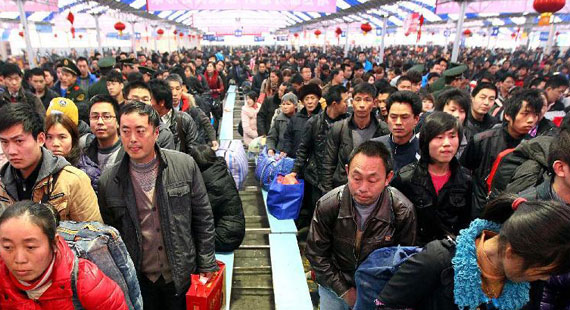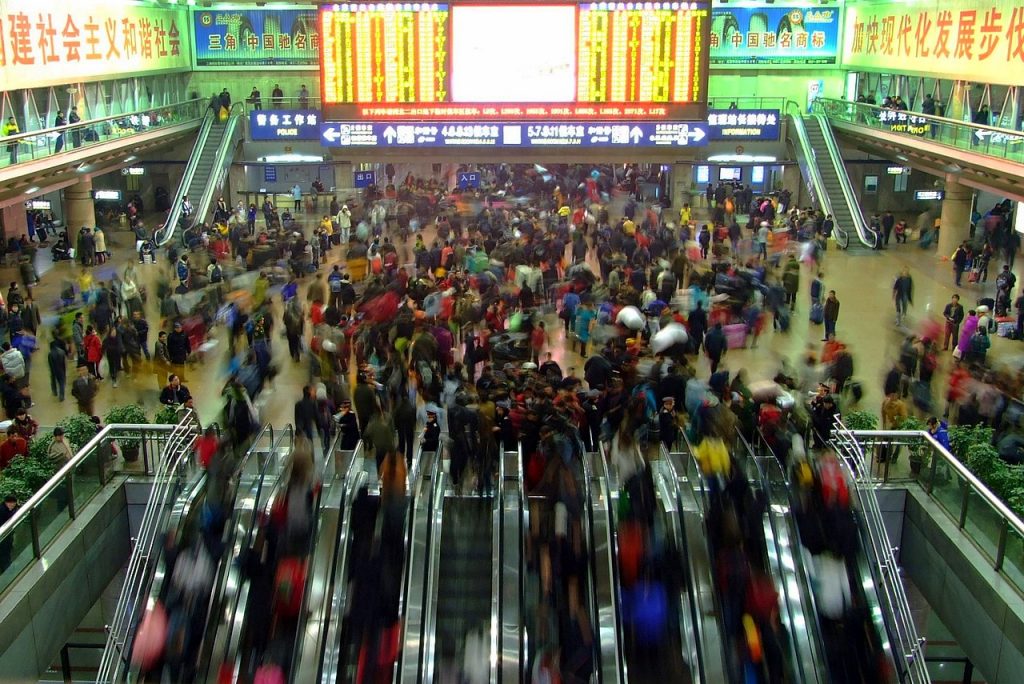
- Chinese travel from different cities where they work for a living to their hometowns to celebrate the New Year with their families and friends, during the Spring Festival travel season or the Chunyun period
- This year the Communist government is desisting the Chinese people from travelling to their hometowns using various means including subsidies and perks.
- China bragged that it has won over the virus and eased all restrictions as early as June last year. Now it seems that the Communist government is unable to hide the recent surge and is doing everything to hide the truth about the present situation in the country.
- The government does not wish to increase the infections be embarrased before the annual session of China’s top legislature, the National People’s Congress, scheduled to be convened on March 5.
- The Communist-led government has decided to provide subsidies for those who will not return to their hometowns.
The Spring Festival travel season or the Chunyun period, is a period of travel in China which usually begins 15 days before New Year’s Day and lasts for around 40 days. Chinese travel from different cities where they work for a living to their hometowns to celebrate the New Year with their families and friends. This year the period is supposed to start on February 11 and last till March 8. With nearly 3 billion passenger journeys estimated during the period, it has been called the largest annual human migration in the world.
However, this year the Communist government has decided to play spoilsport and throw spanner in the works as it is desisting the Chinese people from travelling to their hometowns using various means including subsidies and perks. China which gloated that it had won over the Corona virus and allowed its people to move freely last year, is seeing a huge surge in cases all acorss the country during the last few weeks. On one hand the Communist government wishes to hide the facts about the recent surge in COVID19 infections, on the other it is imposing strict inhuman quarantine in several provinces and restricting people from traveling to their own native towns.
Since last year, China has tried several ways to wade off the allegations of not doing enough to contain the virus during the initial outbreak. When countries across the world were still under lockdown and reeling under mounting cases of infections and deaths, China bragged that it has won over the virus and eased all restrictions as early as June last year. Now it seems that the Communist government is unable to hide the recent surge and is doing everything to hide the truth about the present situation in the country.
The Communist government has not outrightly banned people from travelling as such a ban wuould anger people and the anger could spill out of the country and fail its intentions to hide facts on ground. Hence, it seems that it has employed several ways to desist people from traveling.
The government early this week said that people who do not have a negative certificate of a polymerase chain reaction (PRC) test will not be allowed to enter the capital from outside the city till March 15. Some company and government officials said they have been asked to stay in Beijing, as the city has accelerated antivirus measures in the run-up to an annual session of China’s top legislature, the National People’s Congress, scheduled to be convened on March 5.
The government does not wish to increase the infections be embarrased before the party session, believe observers. The Communist-led government, meanwhile, has decided to provide subsidies for those who will not return to their hometowns.
In Shenzhen, a technology and innovation hub known as China’s “Silicon Valley,” some people who will stay in the city will receive digital currency worth 200 yuan ($31) as New Year’s gift money, which can be used through smartphone apps at designated stores, reports Jakarta Post.

The Chunyun season is a long-held tradition for most Chinese people to reunite with their families during Chinese New Year. People return home from work or study to have reunion dinner with their families on New Year’s Eve. In recent years the period has become more significant for the families as more number of Chinese are working in far off cities and more students are studying in universities outside of their hometowns. Moreover, the Spring Festival holiday ‘Chunyun’ period falls around the same time frame as their winter break.
However, the common citizens of China will pay for the shenanigans of the Communist party and its government which has failed to contain the virus. China has officially claimed only a few cases but the extensive lockdown measures in several cities and far away villages uncovers the true extent of the latest surge of COVID-19 infections in China
On January 20, two more Chinese cities went under lockdown, as Beijing mandates 4-Week quarantine for travelers between various provinces. While China officially claims that it has detected ‘only 7’ cases of COVID-19 in Beijing and few cases in other cities, the extensive lockdown measures in several cities and far away villages reveal the true extent of the latest surge, believe experts.
A countrywide COVID-19 relapse has resulted in the shut down of at least 11 regions. The CCP (Chinese Communist Party) backed Global Times newspaper on Jan. 18 reported that 11 Chinese regions are under “de facto lockdown” amid virus infections. CCP authorities relocated about 20,000 people in Shijiazhuang, the capital of Hebei Province, to other areas for quarantine several days ago.
The latest lockdown measures and strict quarantine rules has the Chinese citizens themselves question the veracity of the official figures. The Chinese regime is known to cover up the figures and release only what it wishes its citizens to see. The plight of the migrant workers and the latest surge in COVID-19 cases was being talked about in the Chinese social media. Several netizens on Weibo have posted about how workers may not get their year-end bonuses and could lose their jobs if they can’t return to work.
Since first being detected in the central Chinese city of Wuhan in late 2019, the virus erupted into a pandemic that has sickened over 100 million people and caused more than 2.1 million deaths worldwide, according to data by Johns Hopkins University.
